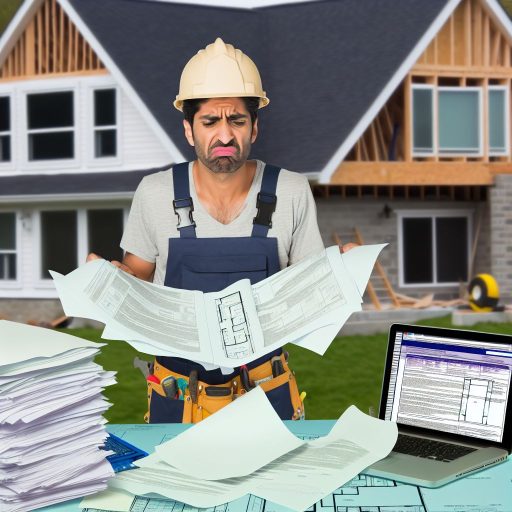Understanding the Basics of House Flipping
What is House Flipping?
House flipping involves buying properties to renovate and resell quickly.
This strategy aims for a profit within a short time frame.
It requires a keen understanding of the real estate market.
Why Consider House Flipping?
Flipping houses can be financially rewarding when done correctly.
It allows investors to create value through renovations.
Additionally, it offers a hands-on approach to real estate investing.
Essential Steps for Successful House Flipping
Start by selecting the right property in a desirable location.
Next, conduct a thorough market analysis to ensure profitability.
Once you acquire a property, plan your renovations wisely.
Focus on high-impact improvements that enhance appeal.
Finally, time your sale to coincide with favorable market conditions.
Financing Your House Flip
Explore various financing options before you begin.
Consider traditional mortgages or hard money loans for purchasing property.
Be aware of the costs involved in renovations to budget accordingly.
Understanding your financial limits helps prevent costly mistakes.
The Importance of a Strong Team
A successful flip often hinges on the quality of your team.
Seek reliable contractors for renovations and repairs.
Engage a real estate agent experienced in the local market.
Teamwork leads to efficient processes and better final results.
Budgeting for DIY Renovations
Setting Your Budget
Start by determining how much capital you have available for renovations.
Next, assess the condition of the property you plan to flip.
This will help you identify necessary improvements that fit within your budget.
Additionally, consider potential resale value after renovations.
Establish a realistic budget to avoid overspending.
Prioritizing Renovations
Identify key areas that will provide the greatest return on investment.
Focus on kitchen and bathroom upgrades, as these often attract buyers.
Also, consider cosmetic improvements like painting and flooring.
Make a list of necessary repairs versus desired upgrades.
This will help you allocate funds effectively.
Researching Costs
Take time to gather quotes from contractors and suppliers.
Use online resources to compare prices for materials and labor costs.
Look for discounts on bulk purchases or seasonal sales.
Staying informed about pricing trends can save you money.
Creating a Contingency Fund
Always set aside a portion of your budget for unexpected expenses.
Contingency funds should be around 10-20% of your total budget.
This ensures you can handle surprise costs without derailing your project.
Unexpected issues often arise during renovations.
Tracking Expenses
Maintain detailed records of all your renovation expenses.
Use spreadsheets or budgeting apps to monitor costs in real-time.
This practice will help you stay within budget.
Regularly review your financial plan to make necessary adjustments.
Financing Options
Explore various financing options if needed to fund your renovations.
Consider home equity loans or renovation loans for additional cash flow.
Consult with financial advisors for the best options available.
This will help you manage cash flow effectively throughout the project.
Essential Tools and Materials for Successful Renovation Projects
Basic Hand Tools
Every DIY renovator needs essential hand tools handy.
Start with a hammer for driving nails and fastening materials.
A quality tape measure is crucial for accurate measurements.
Additionally, a utility knife can be used for various cutting tasks.
Don’t forget a set of screwdrivers for different screw types.
A level ensures surfaces are perfectly horizontal or vertical.
Finally, pliers provide a strong grip for easy handling of various materials.
Power Tools
Power tools significantly enhance your renovation efficiency.
A drill is indispensable for creating holes and driving screws.
Consider investing in a circular saw for cutting wood and other materials.
An oscillating multi-tool is versatile for intricate cuts and sanding.
A jigsaw is great for curved cuts and detailed work.
To add to the collection, a reciprocating saw excels in demolition tasks.
Safety Equipment
Safety should always be a top priority during renovations.
Wear safety goggles to protect your eyes from debris and dust.
Use gloves to shield your hands from sharp objects and chemicals.
Furthermore, a dust mask helps filter out harmful particles.
Consider ear protection when using loud power tools.
Lastly, ensure you have a first-aid kit readily available.
Essential Materials
Stocking up on essential materials ensures you’re prepared for any project.
Drywall is a standard choice for interior walls and ceilings.
Wood, including plywood and lumber, is essential for structural elements.
Insulation materials help improve energy efficiency in homes.
Paint and primer can refresh the look of any space effectively.
Finally, fasteners such as nails, screws, and anchors hold everything together.
Explore Further: Renovation Cost Estimation for Fixer-Upper Homes
Top DIY Renovation Projects That Add the Most Value to Your Home
Kitchen Upgrades
The kitchen often serves as the heart of the home.
Upgrading it can yield high returns on investment.
Consider refacing cabinets instead of full replacements.
Adding modern hardware can transform the look instantly.
Installing a stylish backsplash adds both function and flair.
Don’t underestimate the power of new lighting fixtures.
Bathroom Remodels
Bathrooms are another area that attracts buyers’ attention.
Small adjustments can have a big impact here.
Updating faucets and showerheads can enhance efficiency.
Consider re-grouting tiles to refresh the appearance.
Adding storage solutions improves functionality effectively.
Exterior Improvements
The exterior of your home makes the first impression.
Fresh paint or siding can boost curb appeal significantly.
Invest in landscaping to create an inviting environment.
New outdoor lighting can enhance safety and beauty.
Upgrading the front door can also make a huge difference.
Energy-Efficient Enhancements
Modern buyers value energy efficiency highly.
Installing energy-efficient windows saves money on utilities.
Consider adding insulation to improve comfort levels.
Solar panels are attractive options for eco-conscious buyers.
Smart home technology can also increase your home’s desirability.
Open Floor Plans
Open floor plans create a sense of space and flow.
Consider removing non-structural walls to enhance openness.
This change can drastically modernize an older home.
Ensure the layout remains functional after modifications.
Flooring Replacements
Quality flooring is essential for adding value.
Hardwood floors are particularly appealing to buyers.
If you choose carpets, opt for high-quality materials.
Tile in kitchens and bathrooms offers durability and style.
Consider installing laminate as an affordable alternative.
Discover More: How to Incorporate Smart Technology During Home Renovations
How to Create a Renovation Timeline
Establishing Your Goals
Begin by outlining your renovation goals.
Consider your budget, timeline, and desired outcomes.
Identify which areas need the most attention.
This will provide a clear direction for your project.
Breaking Down the Project
Next, divide your renovation into manageable tasks.
List the tasks required for each area of the house.
For example, focus on kitchens, bathrooms, and living spaces first.
This helps in understanding the scope of work involved.
Creating a Timeline
Develop a timeline for when each task should be completed.
Estimate the duration of each task based on your experience.
Be realistic about how long each phase will take.
Include buffer time for unexpected delays or issues.
Organizing Tasks
Prioritize tasks by their dependency and importance.
Some tasks can only start after others are finished.
For instance, you cannot paint until drywall is installed.
Organizing tasks will keep the workflow efficient.
Assigning Responsibilities
If working with a team, delegate responsibilities clearly.
Ensure everyone understands their specific tasks.
Regularly check in with your team for updates.
This accountability keeps the project on track.
Finalizing the Plan
Review your timeline and adjust as necessary.
Ensure that every task is accounted for.
Set milestones to measure progress throughout the project.
This will help keep motivation high and goals clear.
Monitoring Progress
During the renovation, frequently assess progress against your timeline.
Identify any delays and adjust your plan accordingly.
Communicate transparently with your team about challenges.
Keeping the lines of communication open fosters teamwork.
Delve into the Subject: Optimizing Budget Planning Through Renovation Cost Estimation For U.S. Investors

Navigating Permits and Regulations for Home Improvement Projects
Understanding Permits
Obtaining permits is crucial for any renovation project.
These documents ensure your work aligns with local codes.
Start by checking your local building department’s website.
It usually lists required permits for various projects.
Common Permit Types
Several permits are commonly needed during renovations.
- Building Permit: Required for structural changes.
- Electrical Permit: Necessary for any electrical work.
- Plumbing Permit: Needed for plumbing alterations.
Researching Local Regulations
Each locality has its own set of regulations.
Familiarize yourself with zoning laws in your area.
These laws dictate what can be built and where.
Also, consider homeowners association rules if applicable.
Filing for Permits
Filing for permits can be a straightforward process.
Start by gathering all necessary documentation.
Typical documents include project plans and property surveys.
Submit these documents to the appropriate office.
Follow up regularly to check on your permit status.
Dealing with Denials
Sometimes, permit applications may be denied.
If this happens, review the feedback carefully.
You can often correct issues and resubmit your application.
Seek advice from professionals if needed.
Hiring Professionals
Consider hiring an architect or contractor for complex renovations.
They can assist with the permit process significantly.
Professionals are familiar with local regulations.
Additionally, they often know how to expedite the process.
Staying Organized
Maintaining organization is key during any renovation.
Create a dedicated folder for all your paperwork.
This folder should include permits, plans, and correspondence.
Use a checklist to track your permit applications.
Discover More: Guide To Navigating Legal Challenges In Property Development
Choosing the Right Design Style: Trends That Attract Buyers
Understanding Buyer Preferences
When flipping houses, understanding buyer preferences is essential.
Current trends can significantly influence your renovation choices.
Modern designs are highly sought after, appealing to many buyers.
Consider incorporating open floor plans for a spacious feel.
Minimalist aesthetics often attract buyers looking for simplicity.
Popular Design Styles
Several design styles consistently capture buyers’ attention.
- Farmhouse style offers a cozy, rustic appeal.
- Mid-century modern designs showcase timeless elegance.
- Industrial looks bring a trendy, urban vibe.
Each style has unique features that can create a lasting impression.
Choose a style that resonates with the target market for your area.
Color Schemes That Sell
The right color palette can make a significant impact.
Neutral colors tend to create a calming environment.
Warm tones can add a touch of comfort and invite potential buyers.
Bright accents may enhance visual appeal without overwhelming the space.
Testing paint samples in different lighting can ensure the best choice.
Incorporating Functional Spaces
Buyers appreciate homes that cater to their lifestyles.
Design functional spaces such as home offices and workout areas.
Outdoor living spaces can extend the usable area of the home.
Consider features like decks, patios, or landscaped gardens.
Smart home technology is increasingly popular and may attract tech-savvy buyers.
Consistency Throughout the Home
Consistency in design creates a cohesive look.
Ensure that your choice of fixtures complements the overall style.
Consistent flooring throughout can enhance flow and spaciousness.
Pay attention to trim, molding, and hardware selections as well.
Completing the aesthetic ensures buyers feel the home is well thought out.
Staying Updated on Trends
Trends in home design can change rapidly.
Stay informed by reading design blogs and attending home shows.
Networking with local real estate agents can provide insight into market preferences.
Consider researching what homes sell for in your area for additional guidance.
Adapt your designs as necessary to meet evolving buyer expectations.
Common DIY Mistakes to Avoid When Flipping Houses
Neglecting a Proper Budget
Flipping a house without a clear budget leads to financial strain.
Ensure you account for all expenses, including unexpected repairs.
Always allocate a percentage of your budget for contingencies.
Underestimating Renovation Time
Many flippers underestimate the time required for renovations.
Rushing projects often results in poor-quality work.
Set realistic timelines and plan for potential delays.
Ignoring Structural Issues
Skimming over foundational or structural problems can be costly.
Always have a professional inspection before purchasing.
Address these issues early to avoid major setbacks.
Choosing the Wrong Materials
Using low-quality materials may save money but diminish value.
Invest in durable, visually appealing materials for higher returns.
Research what materials are trending in the market.
Over-Personalizing the Design
Flippers sometimes focus too much on personal taste.
Your design choices may not appeal to future buyers.
Stick to neutral colors and minimize personal touches.
Neglecting Market Research
Failing to understand the local market can hurt your investment.
Study the neighborhood and know what buyers want.
Adjust your renovations to meet market demands.
Skipping Permits and Regulations
Ignoring local building codes can lead to legal troubles.
Always obtain necessary permits before starting work.
Consult with local authorities to avoid fines.
DIY Overestimations
Many new flippers believe they can handle all tasks themselves.
This attitude can lead to mistakes and wasted materials.
Know your limits and hire professionals when needed.
Poor Project Management
Proper project management ensures smooth operations.
Use tools or software to track progress and budgets.
Delegate tasks clearly among your team members.
Forgetting Curb Appeal
First impressions matter in real estate.
Invest in landscaping and exterior touches.
A well-kept exterior attracts more potential buyers.
Additional Resources
Using ClickUp to manage a DIY Home Renovation – ProcessDriven
What’s the average profit margin on a typical home renovation (flip …




